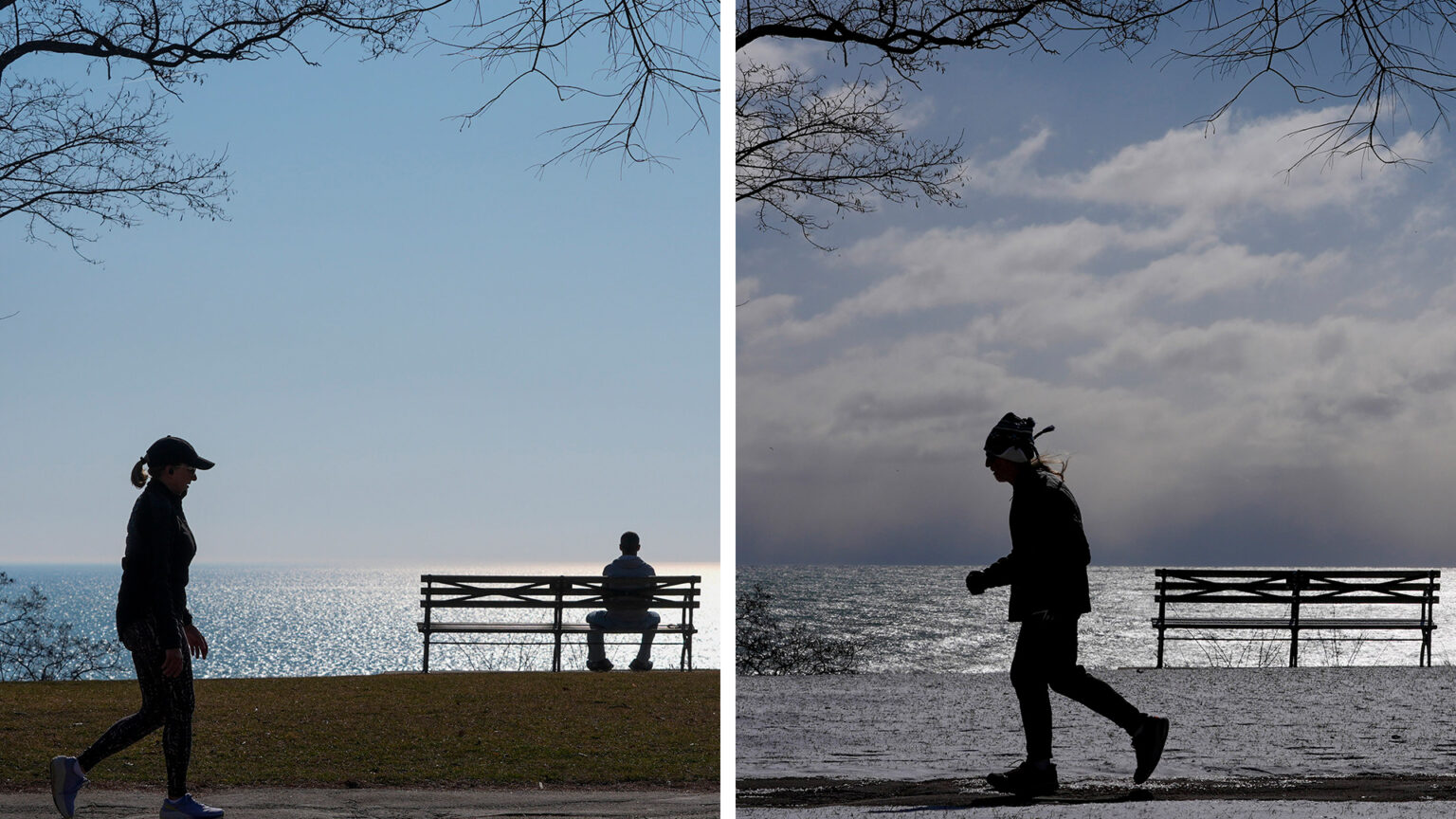Wisconsin cities see a nearly 60-degree temperature swing in under 24 hours
A review of National Weather Service data shows the swing between high and low temperatures from Feb. 27 to Feb. 28 tied a record for Madison and may have set a record for Milwaukee.
Associated Press
February 28, 2024 • Southeast Region

These photos illustrate 50 degree change in temperature in Milwaukee over a 24 hour period. The photo at left shows people enjoying unseasonably mild temperatures above 70 degrees near Lake Michigan on Feb. 27, 2024, while the photo at right shows a runner braving cold weather near 20 degrees at the same location on Feb 28. (Credit: AP Photo / Morry Gash)

Wisconsin cities recorded nearly 60-degree swings in temperatures within 24 hours from balmy weather on Feb. 27 and a chilly return to winter on Feb. 28, tying a record for at least one city and potentially setting a record elsewhere.
That’s according to a National Weather Service review of historic temperature data following the wild winter weather that swept through the middle of the U.S.
“It’s just crazy,” said Aidan Kuroski, a meteorologist with the National Weather Service in Milwaukee. Kuroski reviewed data for Milwaukee and for the state capital in Madison located about 80 miles to the west.
In Madison, the Feb. 27 70 degrees high plunged to 11 degrees by the morning of Feb. 28.
The temperature swing of 59 degrees within 24 hours tied the previous record set in 1911.
Kuroski said recorded high on Feb. 27 broke previous records for the same date, for all of February and for any winter season date — which the weather service considers the months of December, January and February.
On Feb. 27, Milwaukee recorded a high of 74 degrees followed by a low of 16 degrees on the morning of Feb. 28 — a 58-degree change. As a bonus, parts of the city reported snowfall overnight.
Meteorologists think the 24-hour change may have broken or come close to previous record-setting events for Milwaukee in 1911 and 1934. But historic hourly temperature data for Milwaukee is incomplete, making it impossible to definitively decide that’s the case.
The Feb. 27 high did break records for the date, for all of February and for any winter date.
 Passport
Passport











Follow Us